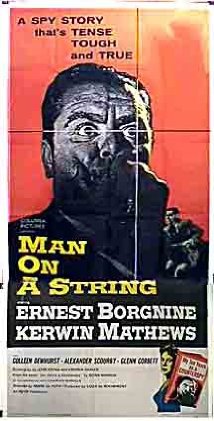Plot
A government intelligence agency in Washington, D.C. wants agent Frank Sanford to follow Boris Mitrov, a film producer who appears to also be a Russian spy. Helen and Adrian Benson, a wealthy American couple with a home in Beverly Hills and a film studio, are communist sympathizers as well, in league with Colonel Vadja Kubelov, the top KGB man in the U.S.
Boris's office is bugged by his assistant, Bob Avery, a plant who is working for the Americans. Now that he has been caught red-handed, Boris is willing to turn double agent, going to Berlin under the pretense of making a documentary film there.
Helen is having an affair with Kubelov, but the Bensons' home has been bugged and they try to flee to Mexico. In the meantime, Boris is sent to Moscow to be entrusted with a new assignment, so Avery gives him a code word ("cinerama") to use should he find himself in danger.
Upon learning that Adrian intends to publicly expose Boris and Kubelov, Avery is able to alert Boris to return to Germany as soon as possible. A checkpoint is closed, but Boris shoots a police officer and escapes safely to West Berlin, only to end up in a fight for his life with a Russian assassin.
This page is based on this
Wikipedia article Text is available under the
CC BY-SA 4.0 license; additional terms may apply.
Images, videos and audio are available under their respective licenses.
